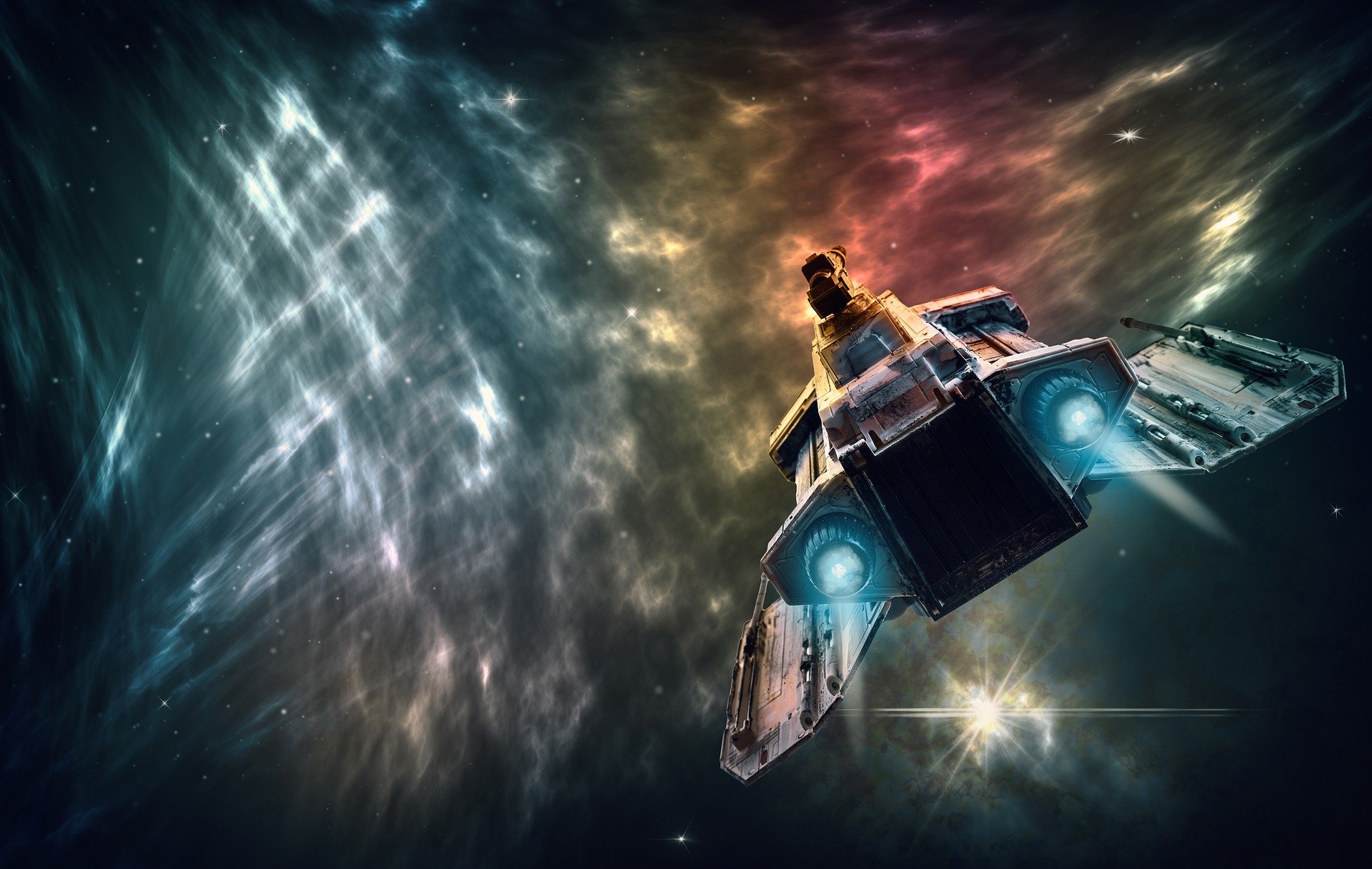Interstellar travel is the journey – with or without a crew – between stars, such as our Sun, to reach other planetary systems (or star systems with planets) similar to our solar system.
The ability to reach other stars is held back by enormous distances. The technology currently available does not allow such spaces to be covered in less than a hundred years.
The idea of setting foot on planets light-years away, and traveling aboard a spaceship has tickled the imagination of many science fiction novelists, starting with the pioneers of the genre such as Jules Verne passing through the vein of space opera, but it has also fascinated numerous scientists.
To cross the enormous interstellar distances, various solutions have been hypothesized.
Robotic missions
The main problem of interstellar travel using current technologies is the transportation of fuel needed to reach considerable speeds. As of 2018, four probes have left the solar system – Voyager 1, Voyager 2, Pioneer 10, and Pioneer 11 – and it would take about 80,000 years to travel a distance similar to that to the nearest star, Proxima Centauri.
Breakthrough Starshot is a project announced by Juri Milner and Stephen Hawking to reach Alpha Centauri with a robotic mini-probe equipped with a solar sail weighing a few grams, powered by a laser thruster external to the probe.
A similar concept was thought up by NASA; while not yet having the technologies available, the space agency is developing a concept to make travel possible for 2069, symbolically chosen as the centenary of the moon landing.
Human missions
A generational ship is a hypothetical type of interstellar spacecraft capable of traveling at speeds variously lower than that of light, and for this very reason destined to host generations of human beings, in view of a journey that could last centuries or even thousands of years. Generational ships have been described as immense hulls capable of keeping a crew of thousands alive for centuries, maintaining an ecosystem necessary for the production of breathable air and food. At the present state of the art, it is the only theoretically feasible system.
To drastically reduce the subjective duration of the voyage, but also the consumption of resources on board, it has been hypothesized that the crew of the spaceship, or a large part of it, can be put in a state of suspended animation (such as hibernation), using technology not yet available though. The spaceship in this case would be guided by an automatic system (a sophisticated computer), or by a small part of the crew in a waking state. Depending on the duration of the trip, it would be possible to carry out shifts.
Another solution could be embryo colonization, a theoretical concept that involves sending a robotic mission to a habitable terrestrial-type planet by transporting frozen human embryos, or by transporting technological or biological means to create human embryos on site.
The proposal would circumvent or reduce some serious technical problems present in other interstellar colonization concepts. Contrary to suspended animation, it does not require the “freezing” – technically more demanding – of fully developed human beings. Compared to a generational ship, it would require significantly fewer resources in terms of sheer mass and complexity in building the spacecraft. Furthermore, the embryos could be launched from Earth with alternative, cheap systems that are incompatible with a human crew, such as a space cannon. In addition to the embryos, the colonizing vessel must carry a series of automatic systems capable of maturing the embryos until they become complete organisms capable of taking care of themselves.
Temporal contraction
Assuming to be able to build a propulsion system capable of bringing the ship to a speed very close to that of light, one would experience, according to the time dilation mechanism foreseen by the theory of relativity, an effect of slowing down the passage of time inside of the ship. This would allow the crew to make a journey lasting tens of years while onboard the spaceship only a few months or years would pass.
Types of propulsion
For interstellar travel at speeds slower than that of light, nuclear fusion rockets could be used, which would make use of the energy generated by a nuclear fusion reactor (such as the Bussard Collector) or nuclear impulse propulsion, such as the spaceship of the Daedalus Project; the latter could reach about 10% of the speed of light, so it could only reach stars closest to the Sun such as Alpha Centauri.
Photon rockets could reach speeds very close to that of light (from 80% to 99.9%) and could go further, but for the moment they are only theoretical.
One possibility to overcome the limits of photon rockets is constituted by the Alcubierre propulsion, a hypothetical system capable of bending spacetime and making spacecraft travel globally faster than light, while not locally exceeding this speed, which is prohibited by the theory of general relativity. In theory, this would be feasible, but in practice, there would be very great difficulties, since this would involve the generation of a negative energy density field and it is not known how this could be achieved. The use of exotic matter with certain properties has been hypothesized, but if this type of exotic matter did not exist, it would not be possible to build a spacecraft with this type of propulsion.

